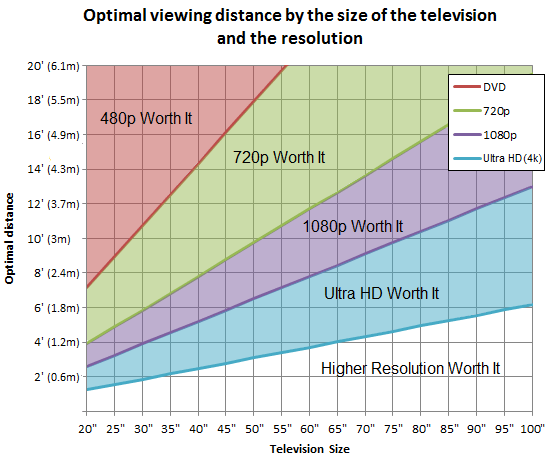Basically 90% of the graphs on the internet are wrong heres another wrong one, youve prolly seen pasted around (its been posted on this forum a few times), its basically the same as the one above. You can quickly check by going 55" see where the difference between 720&1080 is just above 11' on both graphs
Ive been banging on about this ever since the retina display when apple declared at X distance you could not see the pixels, I done something so cunning noone has obviously thought about before, they just accepted the apple mantra (cause they never misrepresent the truth).
I tested it Im a cunning man, I got my retina device put it at X distance & declared 'well I can see the pixels' even though Im shortsighted! (OK I dont wear glasses for near stuff)
The 720 vs 1080 vs 2160 etc at X distance thing is basically the same as the retina thing.
How did this often repeated fallacy come about?
I assume the above graphs are for 20:20 vision, which Ive heard mentioned as 'perfect vision' I can see where this comes about. eg 'I scored 20:20 on my vision test'
What is the normal human eyesight? from what I have read between 20:12 -> 20:16
FWIW mines a lot worse -2.5 & -3 in each eye but (I tested this year at the optimists) with my glasses on I could read the 20:15 line on the eyechart
This would make a good article for some tech website, as youve gotta admit its amusing that the vast majority of the graphs on the internet are wrong.
I may make a html page that does a proper graph if I get time


